If you ask a French person from outside of the two most northern regions what is in the north of France, they will tell you nothing besides mines and rain. And they would be correct to some extent. Yet, while the north is famous for its mines and rainy weather, it is also famous for the part that it played in the First World War. Besides the two most notable cities—Lille and Dunkirk–the interesting locations are Wambrechies–a city in the Nord department–and Notre-Dame-de-Lorette and Vimy (under the Pas de Calais tab).
WambrechiesPas de Calais
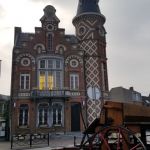
The city of Wambrechies is thought to have been born in the 6th century. The city originally drew many wealthy families who wanted to take advantage of the fresh air. In the 19th century, many more people were drawn to the city due to its prospering textile industry. It was as a result of this growth in population that this building was erected to serve as the town hall. Now, Wambrechies is a quaint town on the edge of the Deule.

The Claeyssens distillery was created in 1817 by a Belgian named Guillaume Claeyssens. This distillery is only one of three in France that use juniper. Wambrechies also has an alcohol with that name, which is produced in this distillery.

As of 1999, this distillery is classified as a historic building and everything is kept in the most authentic style, including this courtyard.
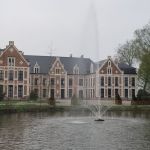
This castle, the château de Robersart, dates from 1760 and is the replacement of one built in the 1500s, which collapsed. While it was once a home for the city's noble family, it is now the property of the city. The city bought the castle to restore it and turned it into a cultural center, housing among other things the Museum of Dolls and Historic Toys.

While small, the Museum of Dolls and Historic Toys offers the unique opportunity to play with the toys that gave birth to today's billiards table.
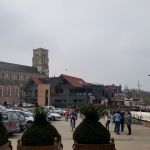
In front of the château de Robersart is the city center. It borders the Deule and features the Church of Saint Vaast (on the left). The city center was recently rebuilt to offer more comfortable amenities for tourists. During the summer people can come on boat to enjoy these new shops. In fact, it is only a thirty-minute boat ride on the Deule from Lille.

This is the nave of the Church Saint Vaast. This Church actually replaced an earlier church that had grown too small to accommodate the growing town of Wambrechies due to the textile industry growth. As a result, the mayor of the city at the time, the viscount Martel Obert de Quevy, had the Church rebuilt in 1868 in neo-gothic style.

A large portion of the windows of the Church were destroyed due to the Second World War. The rebuilt versions are nonetheless gorgeous.

I simply find this statue of a saint showing his leg quite amusing and wanted to share. (The figure represented by this statue is St. Roch who tended to those attained by the plague until he himself fell ill, shown here pointing to his first plague blister. Legend has it that he retreated into the forest and was kept alive and even healed by a hunting dog that brought him bread.)
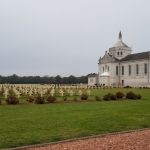
Our Lady of Lorette (or Notre-Dame-de-Lorette in French) is the largest military cemetery in France. It is the location of the first major struggle in the north of France during the Great War. The struggle took place from October 1914 until the end of 1915. Securing this region was essential in order to secure the power supply that came from the nearby mines. The Basilica and the accompanying tower were designed by Louis-Marie Cordonnier (who also designed the Opera and the Chamber of Commerce buildings in Lille) and were inaugurated in 1925.

This building is guarded by retired veterans of the military who fought in the First World War since 1920.

The Ring of Remembrance (or l'Anneau de la mémoire in French) is the first war memorial to ignore the sides on which the soldiers fought. Instead, this memorial features all of the names of the 579,606 soldiers who died in northern France during World War I in alphabetical order. The memorial cost eight million euros and took nine months to build. It was inaugurated on November 11th 2014.

The Vimy memorial is located on those lands and is in memory of the 60,000 Canadian lives lost in the war. At the base of the monument are inscribed the names of the 11,285 soldiers whose bodies were never found.

One of the most striking and symbolic figures on the monument is of a young woman with her head down overlooking the lands. This woman is said to be the young Canadian nation grieving over the lost lives of its young men.

The Vimy Memorial museum is brand new and definitely worth a visit. It is full of interesting facts and personal stories of the people involved in the war without inundating the visitor with information.
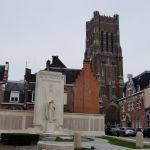
Many of the neighboring towns were completely flattened as a result of the war and a lot has several men lost to the war. Thus, the cities had to be rebuilt and memorials were erected to remember those townspeople who had perished in the war. In the town of Bethune, the Church of Saint Vaast was rebuilt between 1924 and 1927 following the design of Louis-Marie Cordonnier--yes, basically the architect of the north--under the orders of King Charles V and can be seen towering over all of the other buildings. Additionally, this white memorial was built slightly off of the main square to remember the fallen soldiers.




